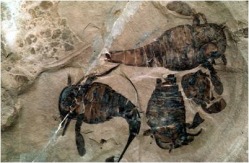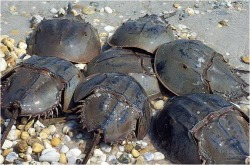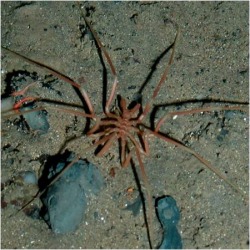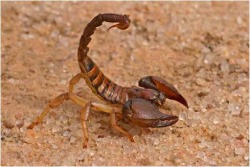Cheliceriformes
The subphylum Cheliceriformes contains 6 pairs of appendages. The first pair is modified into chelicerae, the next pair are modified into pedipalps, and the last 4 pairs are the walking legs. The body is divided into 2 regions: cephalothorax and abdomen. They also don't have a mandible nor an antennae.
Class: Eurypterids

An example of this class would be the water scorpions; however, the Eurypterids are all extinct. They used to be found in marines, and they are freshwater predators.
Class: Merostomata

An example of this class would be the Horseshoe crabs. The Merostomata has a different kind of appendages that separates it from the rest of the Cheliceriformes. Their first appendage is modified into chelicerae, BUT their second appendage is not modified into pedipalps. They are found in shallow coastal water, and their larvae looked similar to the now extinct trilobites.
Class: Pycnogonida

An example of this class would be the sea spider. The sea spider may be different than the other Cheliceriformes in that the sea spider have 4 pairs of walking legs but may also have extra legs due to their segments being duplicated. They are mostly found shallow coastal water and in many polar oceans.
Class: Arachnida

The examples of this class would be the spiders, scorpions, ticks, and mites. In spiders, the chelicerae is modified to be used as fangs to inject poison. In scorpions (first terrestrial invertebrates), the pedipalps are modified into a pincher and their tails are modified into a stinger.
